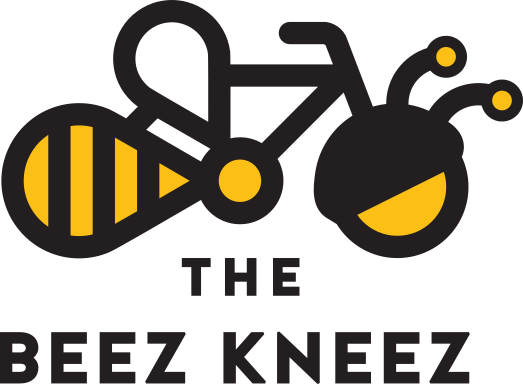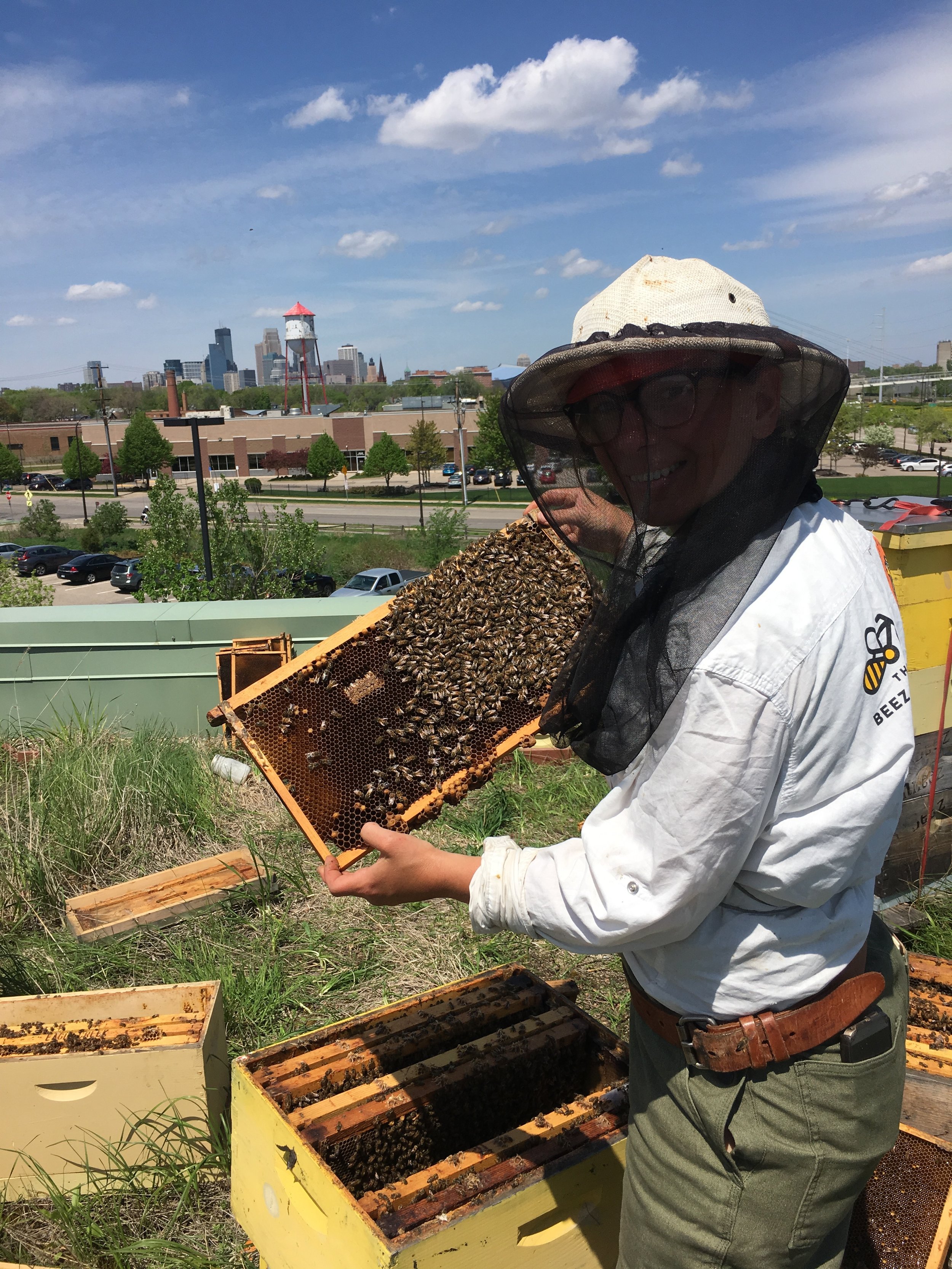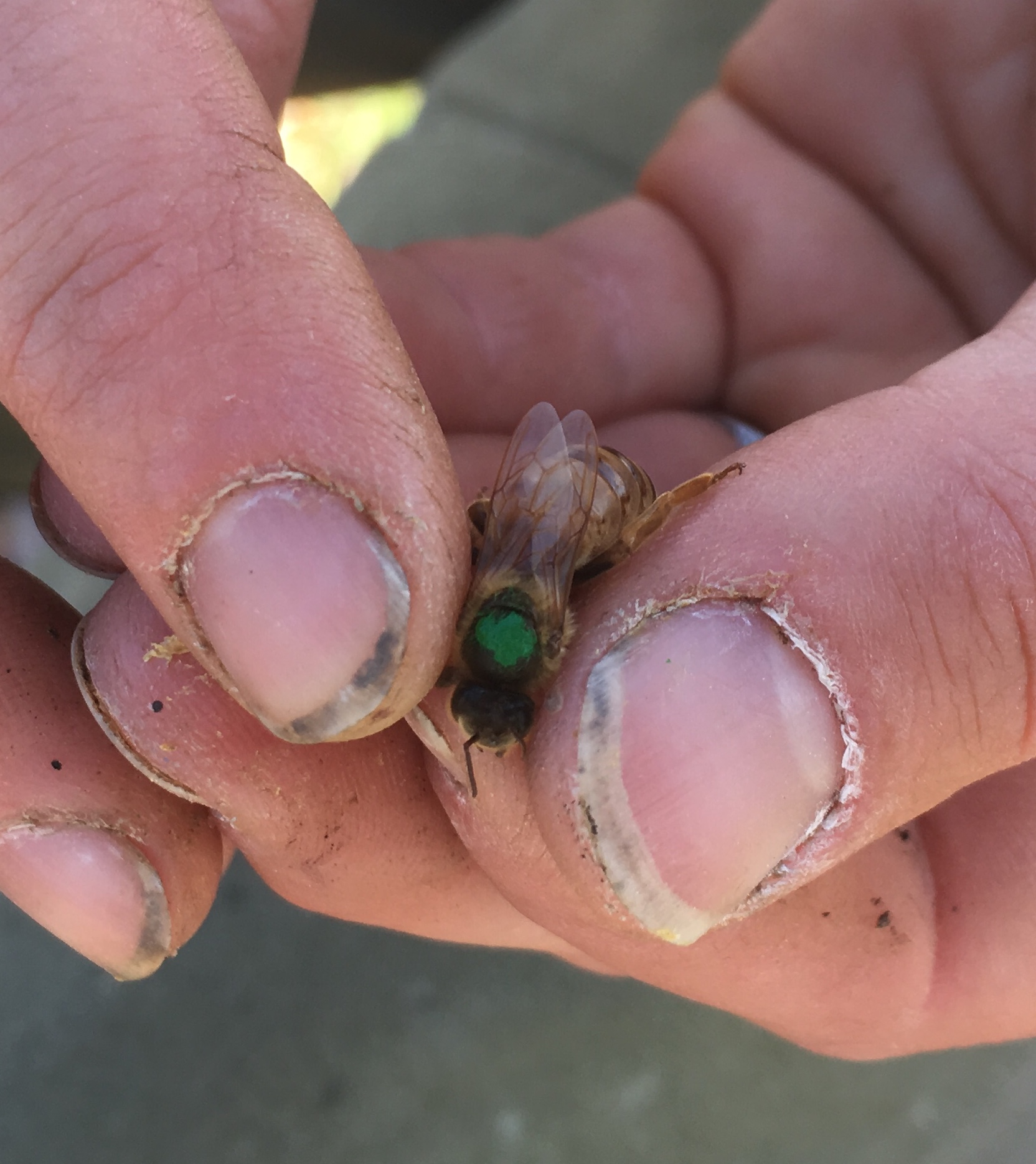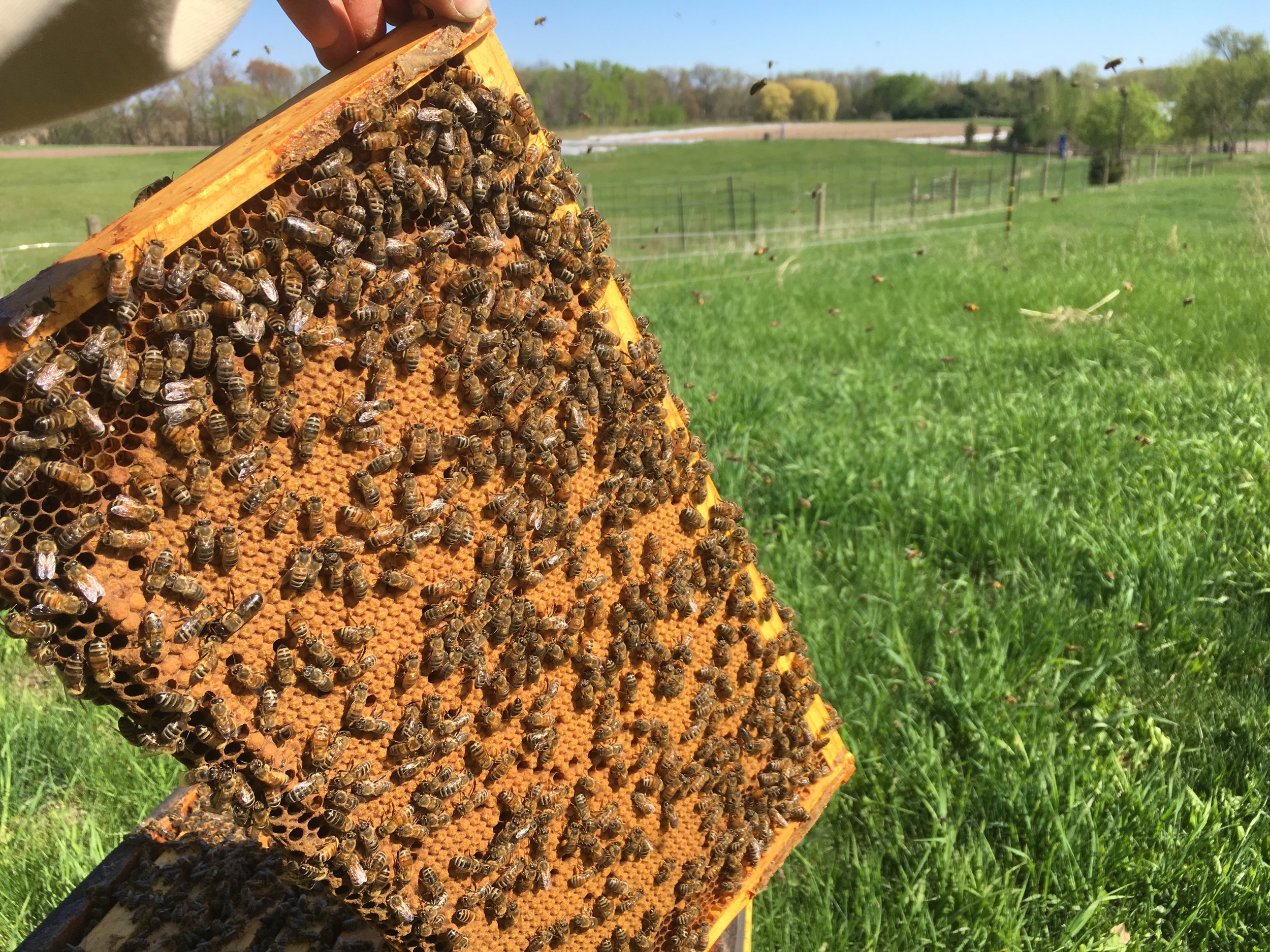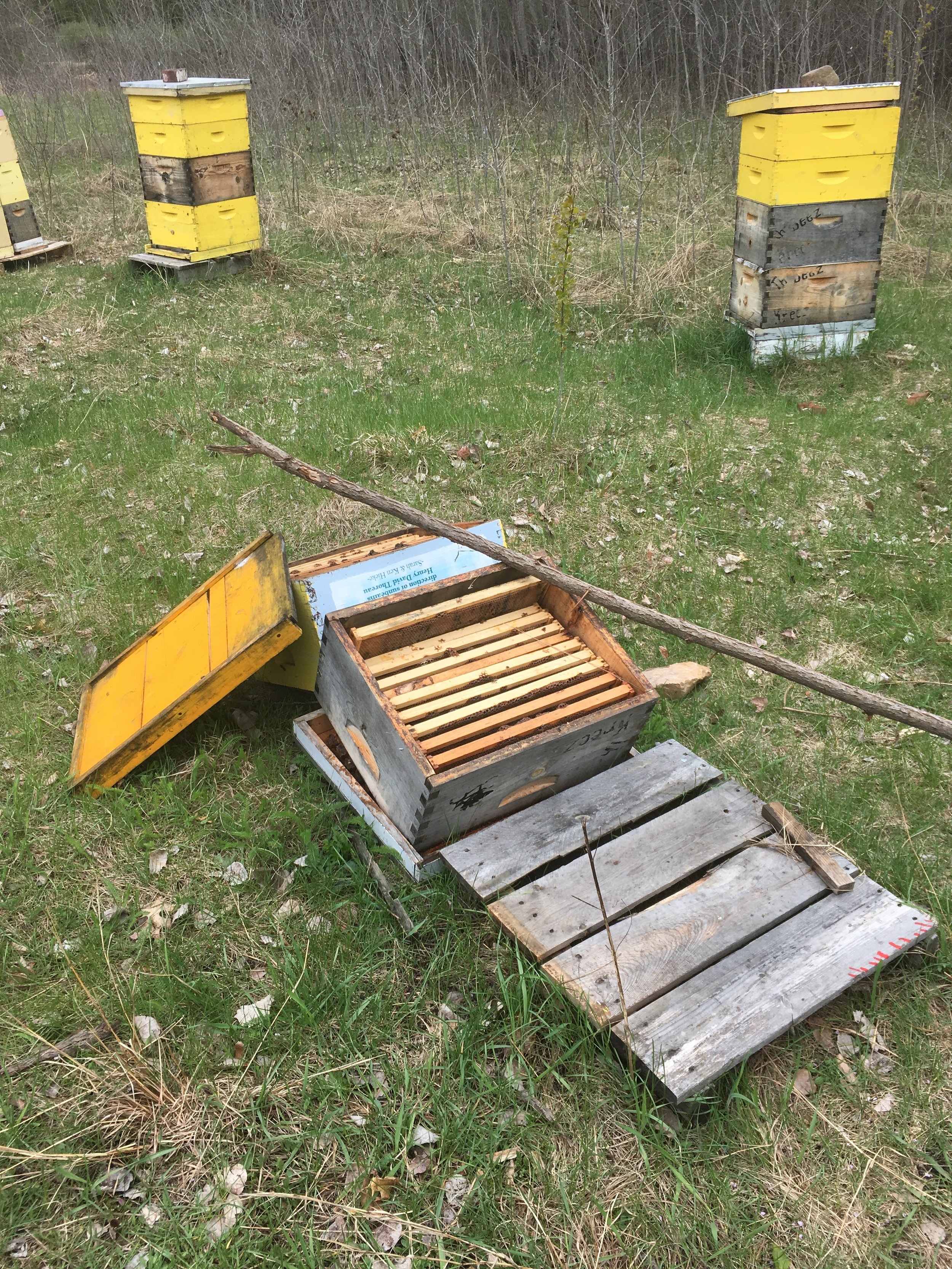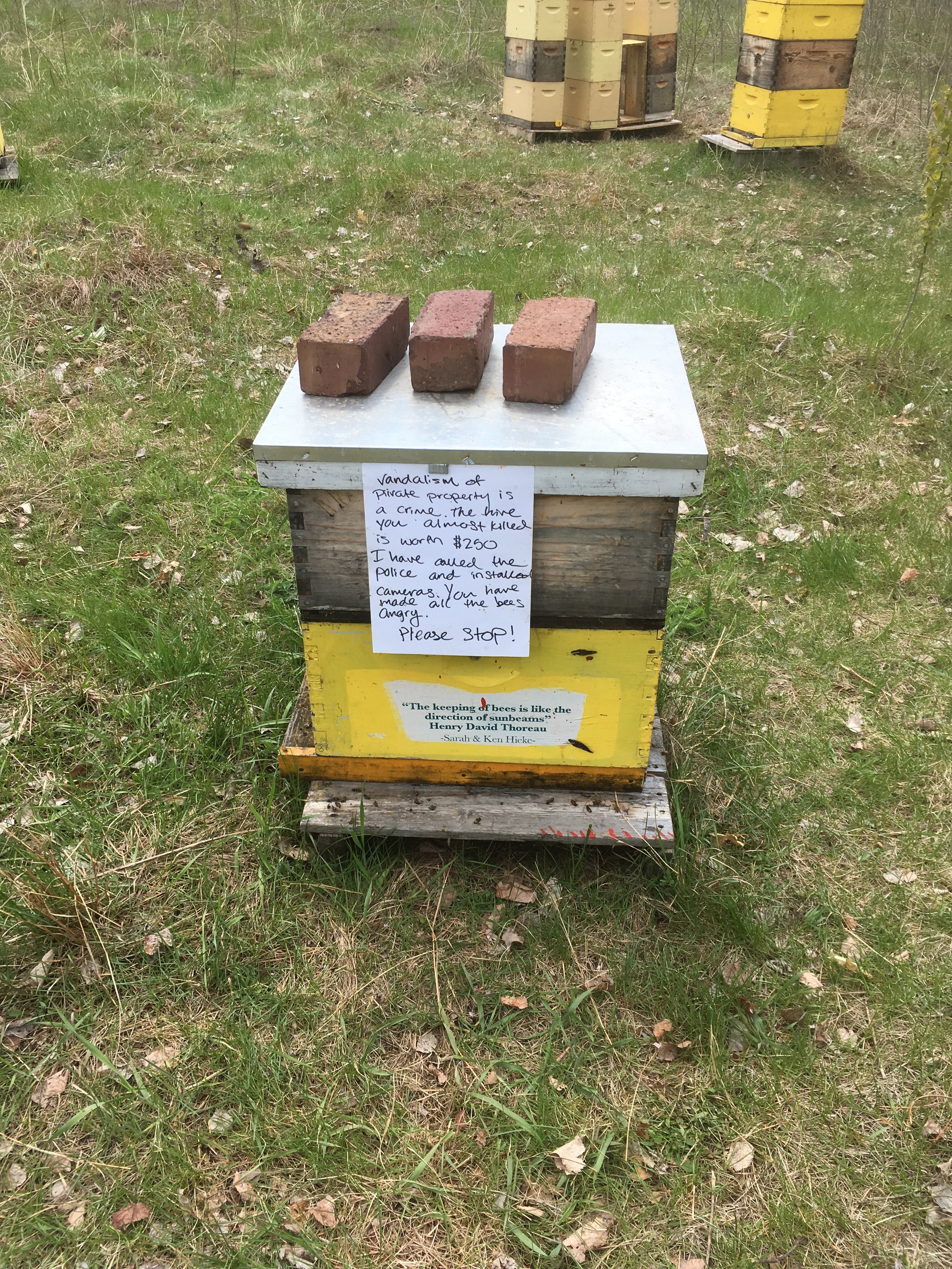What should I bee doing in May 2019
MAY SNOW SHOWERS BRING JUNE FLOWERS? BEARS, VANDALS AND SPLITS OH MY
As I write this post, it is pouring rain with a frost advisory in the morning :( They are even talking snow for my little piece of green heaven in NW Wisconsin. The wild plums started blooming a few days ago and the choke cherries and crab apples have swollen buds. The dandelions were going strong and the bees had just recovered from the “long dark night” of winter. Hopefully, this is the last time we have to endure these cold temps. My last frost risk date up here is May 20th so please, let’s keep it that way. It has been an interesting month for this beekeeper. I have had several close encounters with bears and human hive vandals. See photos above for evidence of hooligans hitting my hives and nearly killing one with long tree branches. I have since called the cops and strapped them down. What is wrong with people?!
WHAT ARE THE BEES DOING IN MAY?
This spring has been a bit challenging. It has been inconsistent and a bit of a creeper. Although, last year we barely had spring and shot right into summer so I appreciate a bit more time to acclimate and see the spring flowers extend on! The lesson to be learned about what the bees are doing and what the beekeepers should be doing is very real. With grand temperature swings, we must really pay attention to what the bees are telling us and how the weather will affect your management decisions. For the last month, healthy overwintered hives have been saying goodbye to the old guard and a much needed hello to the new workers. Populations have been building but swarm pressure has stayed relatively low. With some 70-80degree days, last week is when I really started to notice the flowers turn on and provide more nectar in the hives. Pollen is plentiful and the bees are about ready to make bee babies or swarms. May is a lovely time for both the bees and the beekeepers. Well, most of the time. Some of the hives coming out of winter did not make it very far. Any that were small in populations needed extra feed and more bees. A small hive like this cannot release a foraging force to really improve conditions in the hive. I have seen some turn around but beekeepers will often refer to small, weak colonies as dinks. Hard to get them to recover to be a viable hive in the summer. Not impossible but very rare.
WHAT IS THE BEEKEEPER DOING IN MAY?
My management for overwintered colonies this month has mostly been:
checking for queen health-eggs, larva, brood,
nectar in the hive-if when you are observing frames and it drips out, that indicates a nectar flow is on
number of brood frames-until last week, I only checked in the top box. With somewhat cooler temps, too much digging in the hive can cause problems.
adding room above the brood nest-adding a queen excluder and 2 supers to every big colony. I think it is too early for reversals. Especially this year. Reserve this technique for the main honey flow if your colonies are really going for it but reversals are stressful for a colony and I have seen viruses emerge…like chalk brood and european foulbrood because of early reversals. The bees will move down into boxes on their own. If you have a smaller colony coming out of winter, take away all boxes they are not using until they fill out the one they are in. Also, clean the bottom board
adding drone comb removal frames -an empty deep frame or super frame in position 2-3 next to the brood nest. They will fill with Drone Comb and then you must remove before the drones hatch in 24 days.
transferring nucs into 10 frame equipment for honey production-the nucs that made it through the winter will now be my honey hives. They will have 10-15 frames full and will need more room right way. Young queen and honey flow will set these colonies going faster.
making splits-There are different reasons and ways to make splits. My goals are to make more bees and more honey will at the same time preventing swarming. Last week, I made a few splits in the city with strong overwintered hives. I took the old queens out and put her and a few frames of brood in a 5 frame nuc. I notched a frame that had 4 day old larva(see pic above) and put it in the middle of the brood nest of the original colony. Bees choose that age larva in queen production. If you are not comfortable notching a frame, just make sure they have a frame of eggs in the colony. The idea is that the big overwintered hive will make their own queen, have a brood break as a result, and it will prevent them from swarming. I should have a new, very productive queen by the beginning of June! The bees will not have much to do until then so I added room for them to make lots of honey. This is one method.
Another method for newer beeks- You will need a 2nd bottom board, inner cover, telescoping cover, and extra boxes
Step 1: Add a queen excluder to your hive at least 4 days before you get a queen cell from me. When you come to make your split, the boxes without eggs is the half without your queen. In the example down below, I show the process with a 2 deep colony or a 3 deep colony. In the 2 deep colony example, Box 1 does not have eggs, Box 2 has the eggs therefore the old queen. In The 3 deep colony example, Box 1 an 2 do not have eggs, Box 3 does so therefore has the queen. If you have 2 queen excluders, you can isolate the queen to 1 box in a 3 deep colony.
Step 2: Leave the half without frames of eggs in the same place. Make sure they have a few frames of honey, pollen and sealed brood. Take away the box with frames of eggs which will have your original queen and some brood to a new spot in the apiary or another location if you have one. Make sure this box also has honey, pollen and some brood.
Step 3: Install your queen cell on the center of a brood frame in the center of the hive without eggs, a few inches from the top of the frame. That queen will hatch out and mate in about a week-10days-depends a little on weather. Check for eggs in 12-14 days from when you installed the queen cell. Your original colony will get a new queen and have a brood break. Your split will have the old queen which will continue to lay eggs. Add extra boxes to both splits. The one with the queen cell, will have all the foragers because you left it in the same spot. Use this to your advantage. They will have no brood to take care of so they will need other jobs. If you have new frames, get them to draw them out. If you want honey, put drawn frames. The old queen will need room to lay eggs.
Step 4: Make sure you add room to both colonies, whether it is honey supers or another deep.
****I will for sure have cells ready Saturday, June 1st or Sunday June 2nd. I might have some as early as May 26th or May 27th. I will let you know as soon as I can.
Here are a few good links that discuss making splits. Always ask yourself what your goals are. Do you want to make a split to prevent swarming? Splitting is essentially swarming for that hive before it does it on its own. Do you want extra bees? It is super fun to make your own bees and don’t worry about having too many. Always good to have back up queens and trust me, it is not hard to find homes for bees. Splitting is good for mite control, especially when done with a queen cell. And can make you more honey if you play your cards right. Check out these two helpful articles about splitting https://honeybeesuite.com/how-to-make-a-split/ and http://www.bushfarms.com/beessplits.htm
